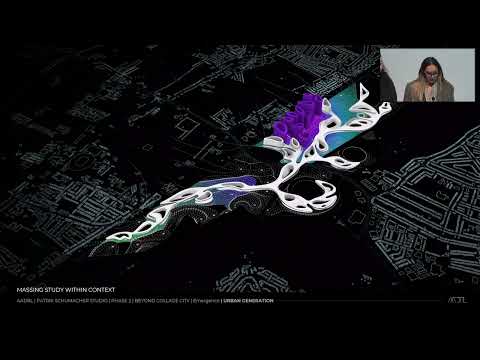
Schumacher Studio 2023-2024
Studio: Patrik Schumacher
Tutors: Jose Pareja, Aswin Shah
Team: Disha Varshney, Mariam Morsy, Xingrong Zhu
Despite the rapid appearance of difficulties in wayfinding, social complexities, segregation, and the loss of uniformity, the discipline of architecture seems to remain passive and in danger of facing the loss of London’s essence. In response to this issue, Emergence proposes an alternative approach with architecture that is legible, ordered, and yet complex. It challenges the redundant notion of collage city while accommodating London’s ever-changing needs. Going beyond collage city shifts from a chaotic and non-ordered urban fabric to a complex, layered and legible overall urban fabric. This concept is manifested through the creation of a formal composition marked by complexity and a variated order.
The Emergence district is designed parametrically with multiple different parameters that vary according to specific algorithms. Firstly, the overall pattern is an overlaying of three important concepts, the differential growth, magnetic fields and meander bend. Their composition creates a unique and dynamic 2D pattern which is then translated into a 3D massing. Such forms are influenced by the surrounding context, allowing for a harmonious integration of forms within the site. Emergence also evokes the notion from Gestalt theory, where each view is unique and creates a sort of illusion.
Emergence’s core is a district conceived with a profound consideration for human presence and perception. The overarching objective is to facilitate navigation while preserving a nuanced complexity and order. The innovative approach involves a megabuilding that serves as a spine, seamlessly connecting, attracting, and guiding individuals throughout the site. This ribbon, emerging from the ground, enables merging of the inside of the buildings with the pedestrian paths, and redefining the preconceived notion of ground.
Emergence is not merely a physical construct; it symbolizes a proposal to redefine the paradigm of city design. By prioritizing the humanistic aspect, our aim is to open possibilities for development and adaptation, ensuring that the urban environment remains responsive to the evolving needs of its inhabitants.